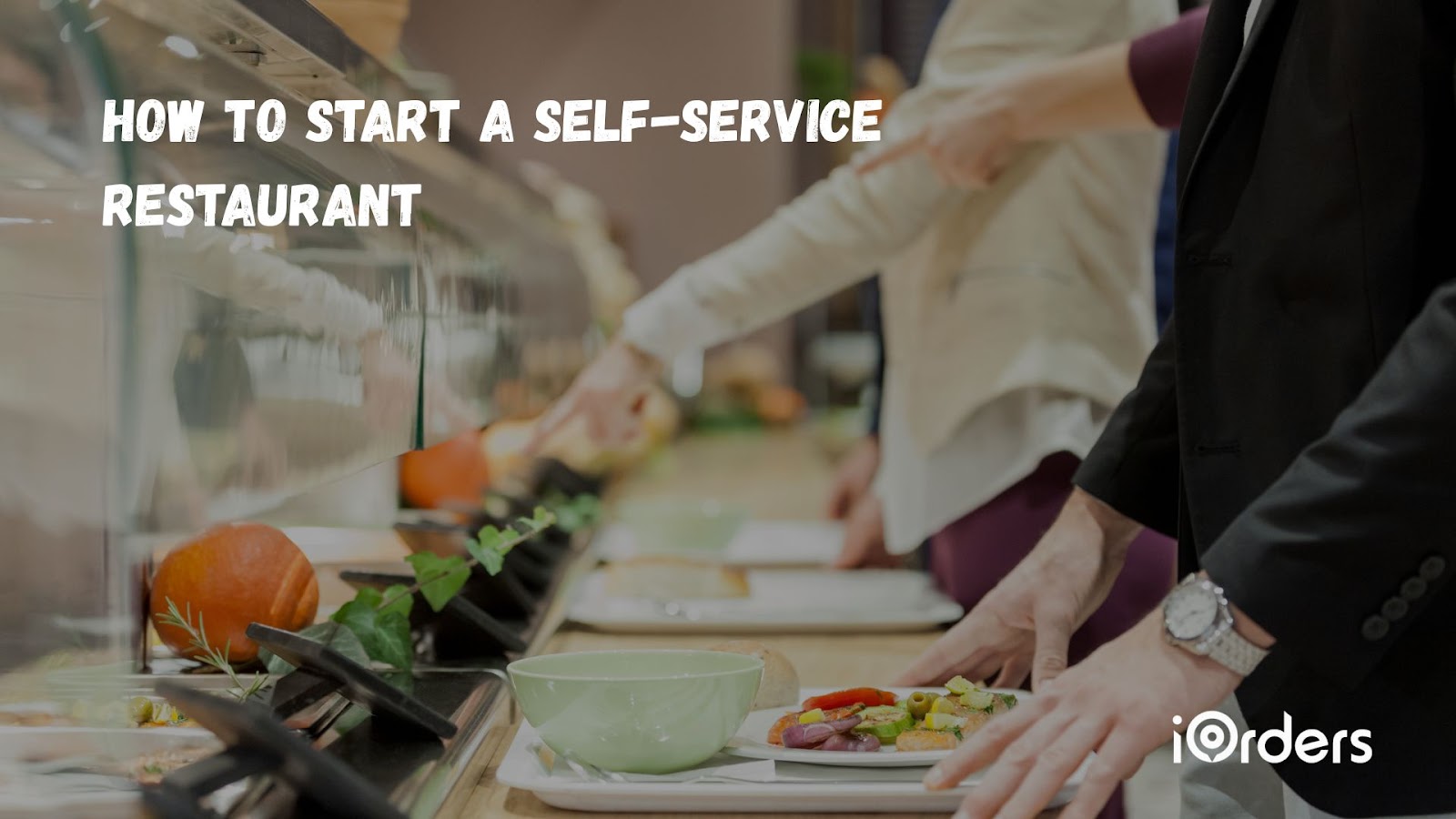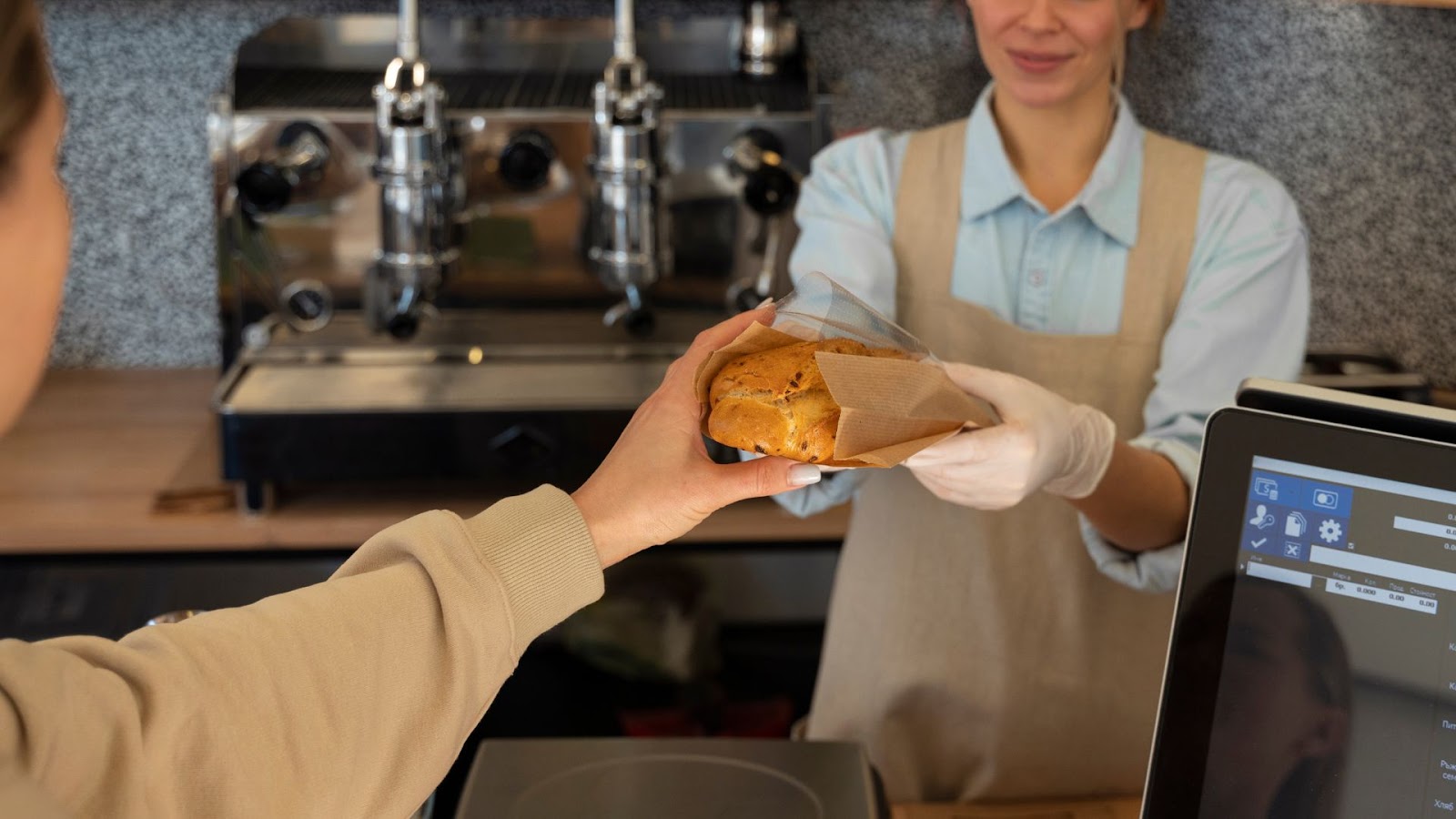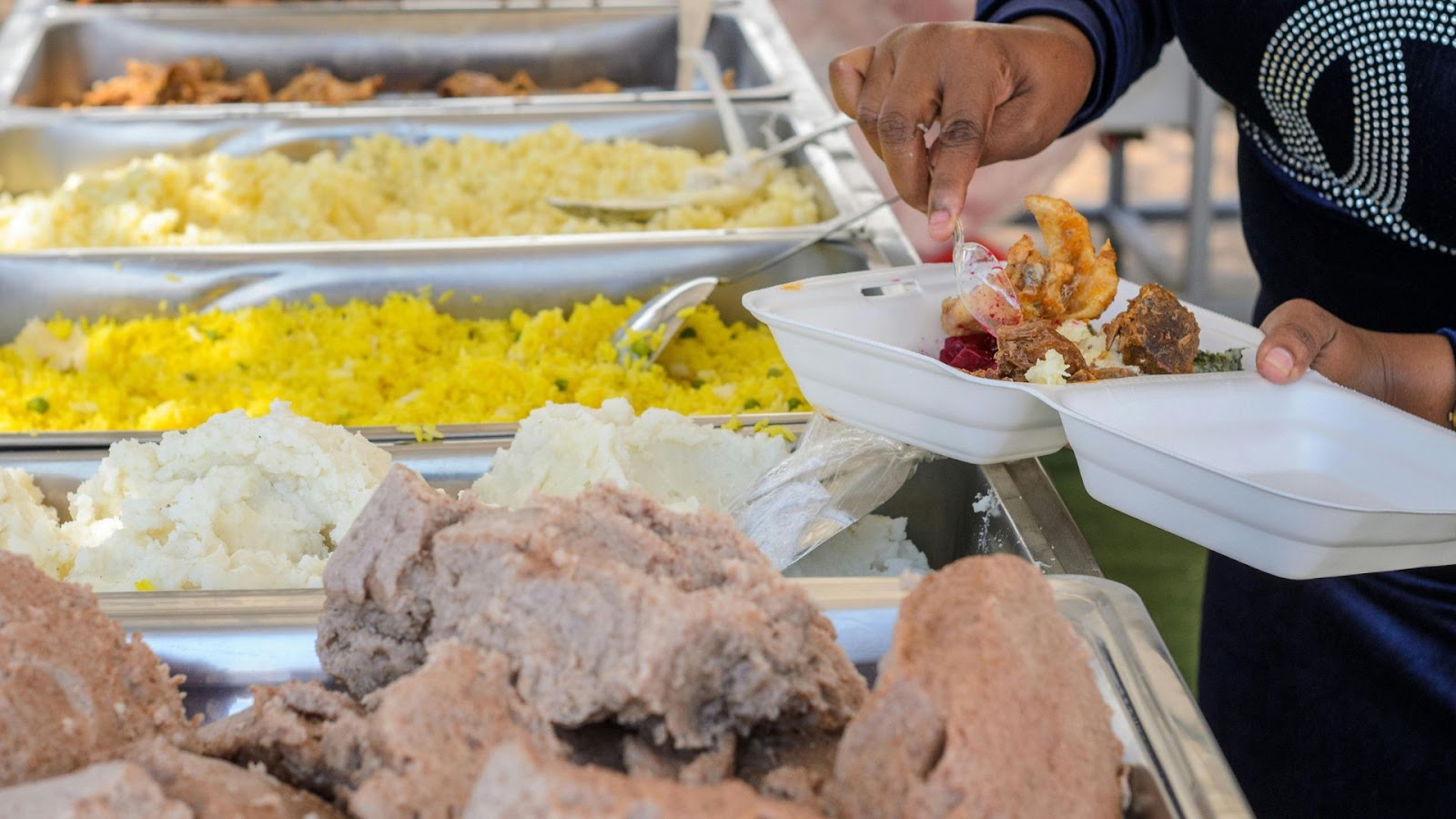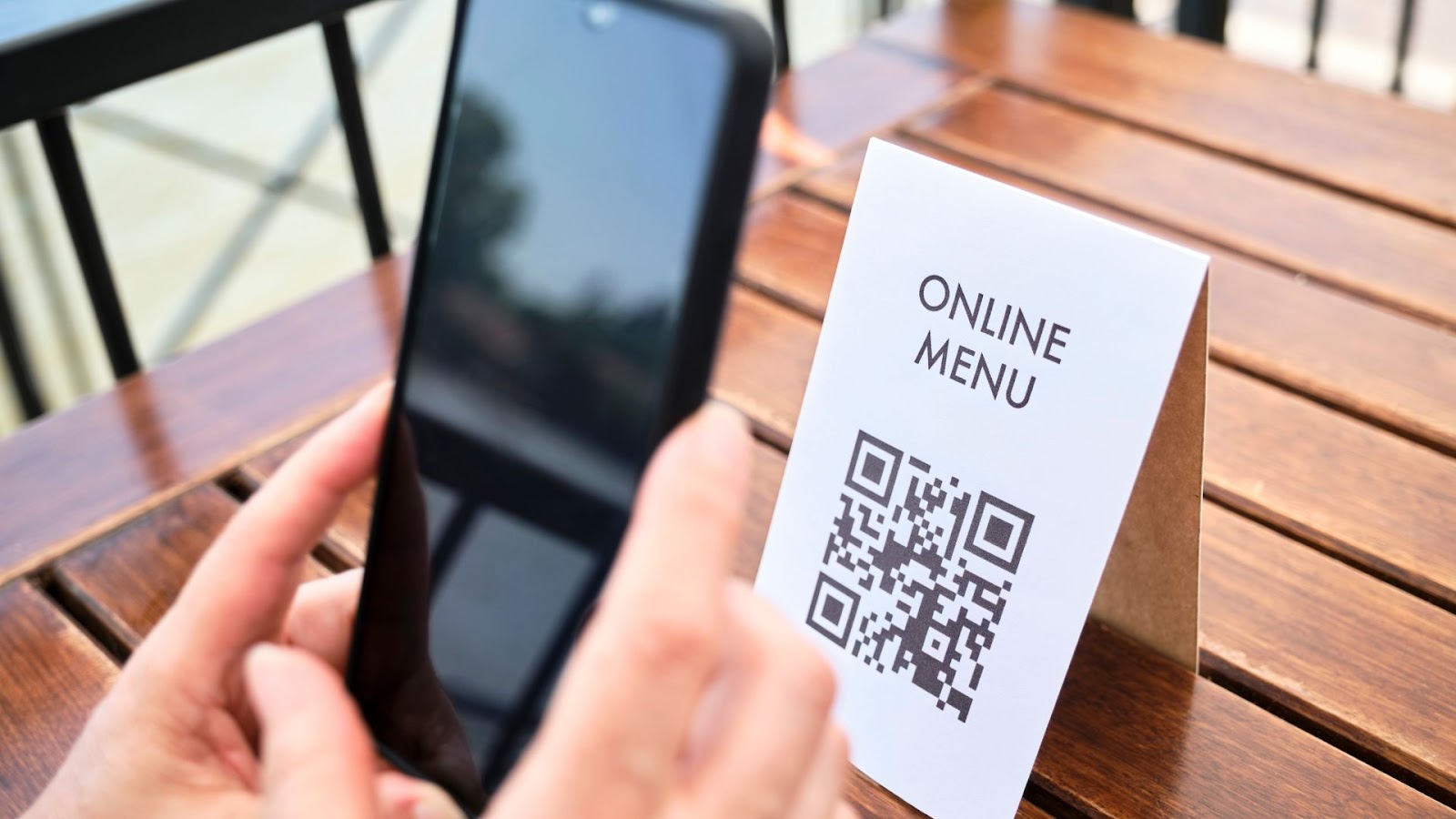July 18, 2025

Self-service restaurants are quickly becoming a practical solution for today’s food industry. From kiosks and QR-code menus to fully automated service models, these tools are reshaping the way people order and experience food.
In fact, 65% of quick‑service restaurant customers say they prefer using self‑service kiosks over traditional ordering systems, and 79% believe kiosks make the experience more convenient. The shift also gained momentum post-pandemic, as contactless service became both a safety measure and a convenience.
So, if you’re considering starting your very own self-service restaurant business, you’re in the right place.
In this article, we’ll explore what self-service restaurants are, the key benefits they offer, and how you can successfully bring this model to life. Let’s look into how self-service is transforming the way customers dine, and why it might be the perfect fit for your restaurant.

Self-service restaurants are eateries where customers place and sometimes collect their orders without relying on waitstaff or cashiers. Instead of ordering at a counter or table, diners use self-order kiosks or mobile apps to browse the menu, customize items, and make payments.
These setups are designed for speed, convenience, and customer control. Some restaurants are fully self-service while others offer a hybrid approach, allowing guests to choose between digital ordering and traditional service, depending on their preference.
The self-service model is especially common in fast-casual and quick-service restaurants, where efficiency is key. It helps reduce wait times, often leading to better customer satisfaction and a smoother dining experience.
Self-service restaurants are generating a lot of buzz, and for good reason. With diners craving faster, more flexible experiences and restaurant owners looking to simplify operations, the model is catching on fast. But when’s the right time to make the switch?
Are you dealing with the following challenges?
If so, now might be the ideal time to explore a self-service setup. Let’s take a look at the key benefits this model brings to the table.
Also read: How to Market Your Restaurant for Events

Adopting a self-service model is a strategic move that can improve almost every part of your restaurant’s operation. From smoother workflows to happier customers and better margins, self-service systems unlock a range of advantages that traditional setups struggle to match.
Here's how the benefits stack up:
One of the biggest wins with self-service is speed. Digital kiosks and mobile ordering eliminate the need for guests to wait in long lines or flag down staff. Orders go straight from the customer to the kitchen, cutting down the steps in between. That means faster service, quicker table turnover, and more guests served, especially during peak hours.
When customers place their orders, there’s far less room for error.
Miscommunication between front-of-house staff and the kitchen is virtually eliminated. Guests can take their time to customize their meals, double-check their selections, and clearly communicate dietary needs or preferences.
The result? Fewer mistakes, fewer comps, and more satisfied diners.
Self-service helps you do more with less. In an industry facing labor shortages and rising wages, automating tasks like order-taking and payments reduces your dependency on front-of-house staff.
This frees up your team to focus on food prep, customer support, or higher-value interactions, all while lowering your staffing costs and improving productivity.
Digital kiosks are built for upselling. From meal add-ons to drink upgrades, they suggest relevant extras during the ordering process, every time, without fail. Many restaurants report a 20–30% increase in average ticket size after implementing self-service technology.
Guests are more likely to explore the full menu and indulge in add-ons when they aren't feeling rushed or pressured.
Self-service gives customers more control over their dining experience. They can browse the menu at their own pace, access detailed ingredient and allergen info, and place their order in a more private, pressure-free environment.
This level of convenience and customization builds trust and often leads to better reviews and repeat visits.\
Every self-service interaction generates useful data. You gain visibility into customer preferences, peak ordering times, and popular items. This makes it easier to optimize your menu, forecast demand, and manage inventory more accurately, reducing waste and helping you make smarter decisions overall.
Self-service isn’t just a passing trend. Today, it’s reshaping the way restaurants operate, helping owners serve smarter, faster, and more profitably.
Now that you know the benefits, let’s walk through how to successfully implement self-service in your restaurant.
Also read: Creating a Successful Restaurant Marketing Budget Plan

Shifting to a self-service model starts with smart planning and the right tools. Here’s how to get it right from day one:
Start by evaluating your needs: Will you use physical kiosks, tablets, or mobile ordering via QR codes? Some vendors offer full hardware setups, while others focus solely on software.
Look for solutions that offer POS integration, kitchen display compatibility, and optional AI features like predictive upselling or voice ordering. Choose a vendor with solid support and scalability options.
Before going live, run pilot tests during slower hours to iron out technical kinks. Train your staff on how the system works, how to guide customers through it, and how to troubleshoot basic issues.
Ongoing support and software updates will be essential to maintain a smooth experience.
A clean, intuitive interface is key. Use high-quality photos, clear menu categories, and easy-to-navigate customization flows. The goal is to make ordering feel seamless, even for first-time users.
Not every guest will want full automation. Consider a blended setup: kiosks for ordering paired with staff runners, or a cashier-plus-kiosk model. This lets you serve different preferences while still reaping the efficiency benefits of self-service.
With the right technology, thoughtful design, and a flexible approach, implementing self-service can be a smooth transition that enhances both your operations and your guests’ experience.
But even with the right tools and thoughtful planning, implementing self-service isn’t without its hurdles.

While self-service offers clear advantages, it’s important to be prepared for a few common challenges and know how to address them effectively.
By planning for these roadblocks, you’ll build a more inclusive, resilient self-service experience that works for both your business and your guests.
While the challenges are real, many restaurants have not only overcome them but turned self-service into a major asset. Let’s take a look at a few real-world examples.

Here are three standout examples of how leading chains have boosted sales and engagement with self-service kiosks:
These stories highlight how self-service kiosks have the potential to lift the bottom line through higher average orders and improve the guest experience across different segments.
So, if you’re ready to implement self-service, check out how iOrders helps you get started with the right tools and expert guidance.

At iOrders, we believe restaurants should have full control over their ordering experience, without losing margins to third-party platforms. That’s why we’ve built a solution that gives you the tools to serve faster, smarter, and on your terms.
With iOrders, you get access to the following features:
Additionally, with iOrders, you can offer reliable delivery without building your own fleet. We integrate with trusted logistics partners like DoorDash Drive and Uber Direct, allowing you to outsource delivery on demand while keeping your operations consistent.
Instead of losing a percentage of every order to third-party platforms, you’ll pay a simple flat delivery fee (typically between $7–$10). You set your pricing, manage your promos, and keep more of what you earn. It’s delivery that works for your bottom line.
Customers order directly from your site or app, and they’ll never see a third-party logo; it’s all white-labeled under your name.
For better customer retention, iOrders puts you in control. You can collect emails and phone numbers, launch loyalty programs, and send targeted promotions that keep guests coming back. It’s your customer base, and you truly own it.
With iOrders by your side, setting up a self-service restaurant is a piece of cake.
Self-service restaurants are more than a trend; they’re a smart, scalable way to meet modern diner expectations while improving efficiency and boosting margins. They offer a win-win, as guests enjoy more control and convenience, while you gain smoother operations and stronger profitability.
And with iOrders, making the switch is seamless. From branded ordering and commission-free delivery to loyalty programs and smart marketing tools, we provide everything you need to launch, manage, and grow your self-service setup with confidence.
Let’s bring your vision to life, affordably, efficiently, and with zero hassle.
Ready to see how it all works? Book a demo with iOrders today and discover how easy it is to launch a self-service restaurant that becomes the next big talk of the block.
1. What is a self-service restaurant?
A self-service restaurant allows customers to browse the menu, place orders, and pay without interacting with staff, typically through kiosks, mobile apps, or QR-code systems. This model streamlines operations while offering guests more speed and control.
2. Are self-service systems hard to set up?
Not at all. Modern self-service systems are designed to integrate easily with your existing POS and kitchen workflows. Many providers offer full onboarding, training, and support, making it simple for restaurants to get up and running.
3. Will I lose customers who prefer human interaction?
Not if you choose a hybrid approach. Many successful restaurants pair self-service kiosks with floor staff who assist as needed. This ensures that tech-savvy guests enjoy speed and convenience, while others still receive personalized service.
4. Can I still offer delivery with self-service?
Yes. Many self-service platforms integrate with third-party delivery providers like DoorDash Drive or Uber Direct, allowing you to outsource delivery under your own brand while managing it all from one dashboard.
5. Does self-service really improve profits?
Yes. Many restaurants see a boost in average ticket size thanks to consistent upselling prompts built into kiosks and apps. Plus, lower staffing costs and faster table turnover contribute to better overall margins.